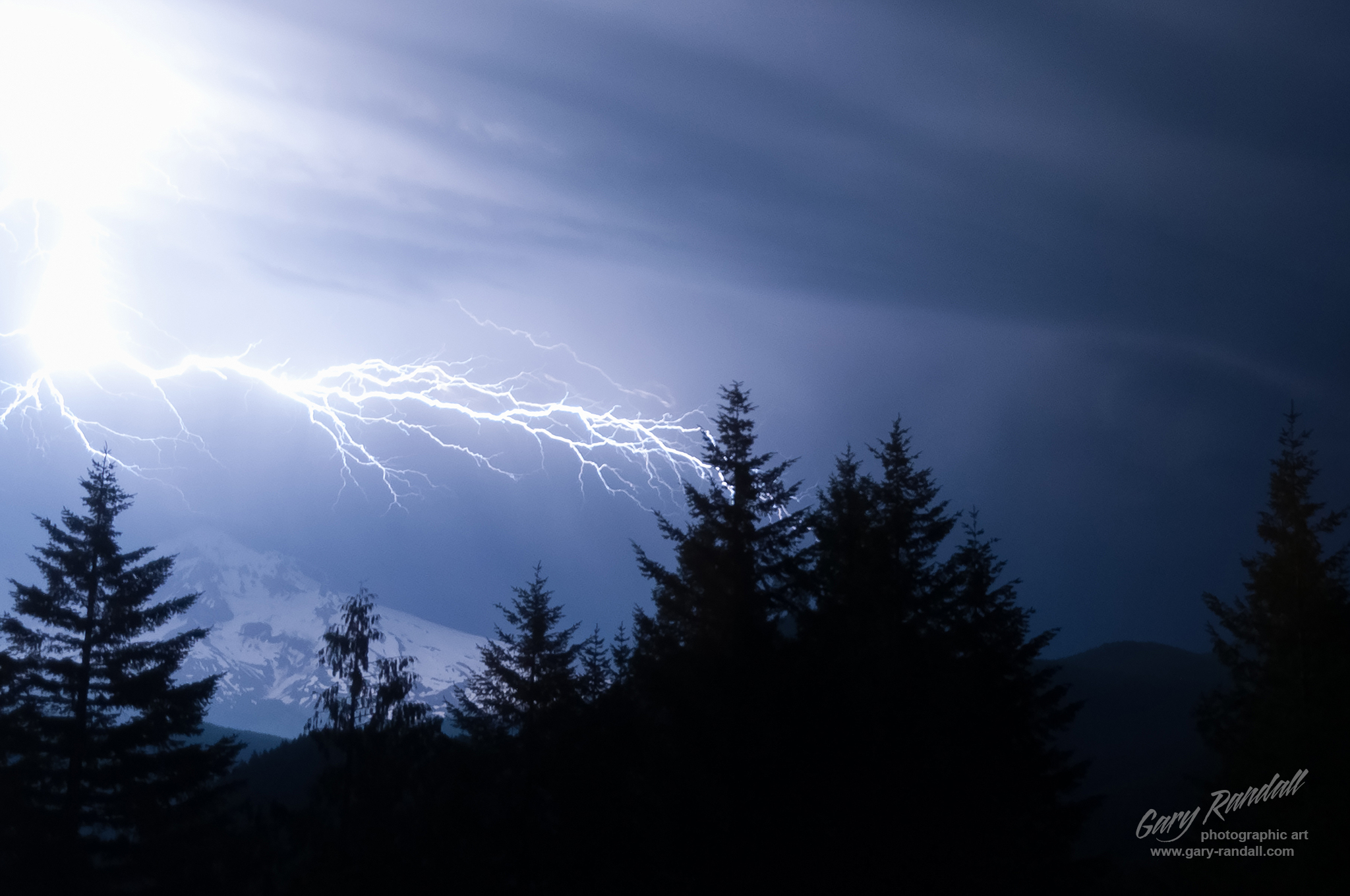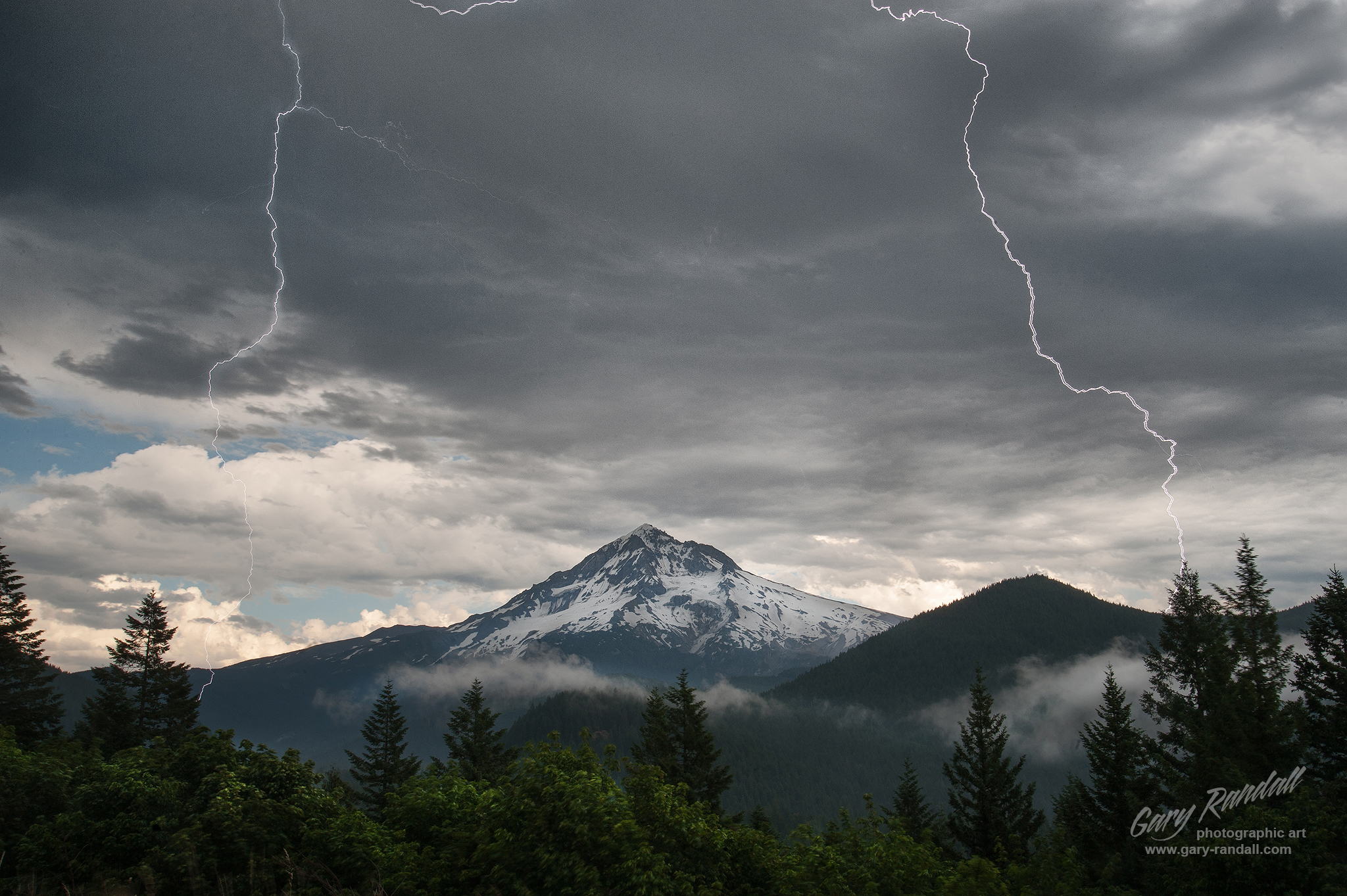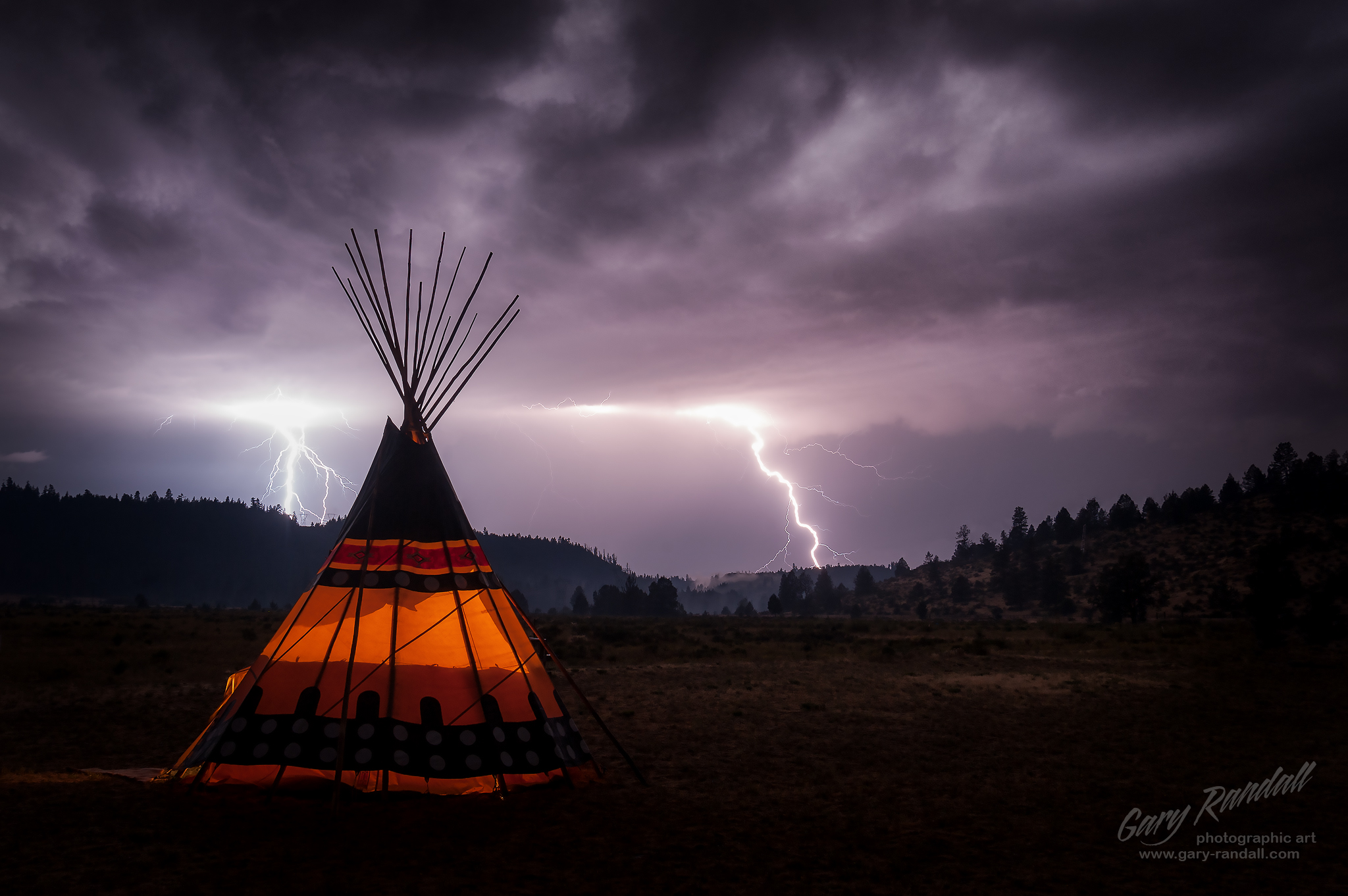Photographing Lightning – With Spring and early Summer comes transitional weather that will cause some amazing photography opportunities. Everything from blue skies with majestic thunderheads, rainbows and lightning. It is photographing lightning that I’m asked about how to capture the most.
A lightning bolt typically lasts about 10 to 50 microseconds (0.000050 sec). That’s a lot faster than your ability to react to it so we will need to discuss methods and conditions that must be understood prior to going out into the field to get that awesome photo of a bolt of lightning, but I must preface the information with a warning about safety.
Standing in the rain with a lightning rod in your hand
Of course when we’re trying to get our lighting photo we’re venturing out into a storm. Be prepared for the weather. Dress appropriately, of course, but also remember that you are standing out in the storm with a tripod and a camera. One can’t help but be reminded of the fellows who are struck by lightning on the 18th hole as they celebrate a great putt with a golf club in their hand.
When the storm is surrounding you, go inside. Do not stand in the middle of a thundering tempest and think that you’ll come away with something more than a quick trip to the hospital, if you’re lucky, to treat you for the effects of a 100 million volt electrical shock. Your best photos of lighting will be when the storm is in the distance.
Equipment
You will want to use a camera that you are able to control manually. Many cameras will allow you to switch to Manual Mode to allow you to control your shutter speed, the duration of the exposure. You will also want to use a tripod to establish a platform for you to put your camera on. It’s easier than trying to hold your camera while you’re working and a necessity for a longer exposure photograph.
Additional gear which will improve your chances of success are a 10 stop Neutral Density Filter (ND filter). And another piece of gear that can be handy is a Lightning Trigger. I will cover the use of both of these pieces in the text of this article.
Daytime or Nighttime
When photographing lighting there are two basic conditions that will require different methods to be successful. Daytime with a lot of light and darkness with little or no light.
It’s easier to capture a lightning strike during the night than during the day. At night time it’s easy to set your camera to make a long exposure, sometimes as long as 30 seconds. Because the light is dim or even completely dark your photo won’t be exposed unless there’s a lightning strike during your exposure. I set my camera up on the tripod and point it in the direction of the storm, set my exposure to 30 seconds and click the shutter and wait for a lightning strike while hoping that it will happen in the direction that I have the camera pointed. If, once you’ve captured some lightning, your photo is too bright make your exposure a little shorter or stop down your aperture (smaller hole, bigger number) and try again. The lightning becomes it’s own flash bulb.
Daytime is a bit more challenging. It’s much more difficult to set your camera up to make a long exposure when there’s so much light that you will need to use a Neutral Density (ND) filter. An ND filter is like sunglasses for your camera. It blocks light allowing you to extend (make longer) your shutter speed which will allow you to photograph the scene using the same method as at night. Make your exposure as long as possible, click the shutter cross your fingers and wait.
High Tech Toys
Of course there’s always the easy way. Technology is your friend when it come to photographing lighting. Many people are just hobbyists and don’t want to spend a lot of money on a toy that they would rarely use, but there is that option.
A lightning trigger is the solution. A lightning trigger can react to the flash of the lightning and click the shutter in time to capture an image. The mechanism mounts to the hot shoe flash connection on top of your camera.
Although handy a lightning trigger is certainly not required to capture lighting.
Have Fun – Be Safe
The most important part of capturing lightning in a photograph for me is the experience. I love being outside and watching sever weather. To be able to make a beautiful and dramatic photo is a bonus.
I can’t stress enough the safety aspect of doing this. Please be safe and don’t put yourself in any dangerous situation to try to make any kind of photograph. There will always be more opportunities in the future.
Give these methods a try. Good luck and as always, have fun with your photography.



